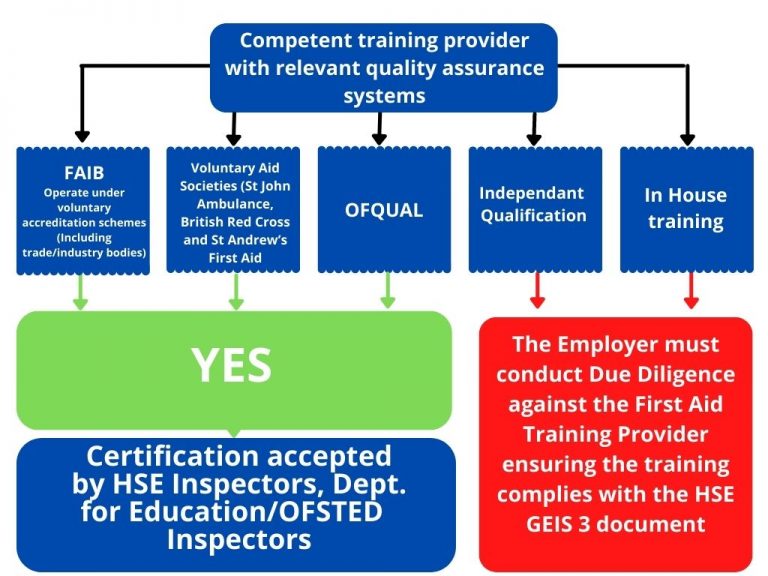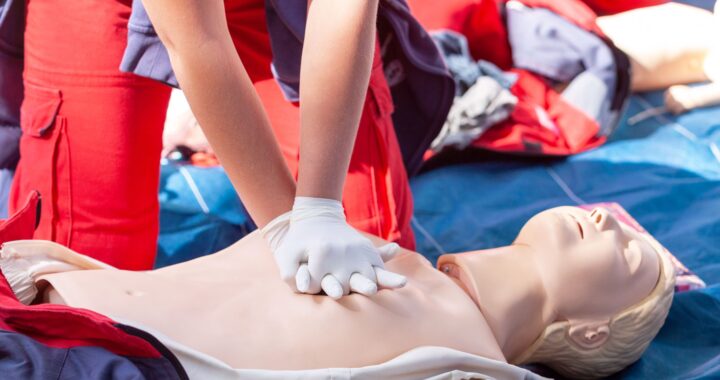Think of your favourite medical drama or action movie.
A character collapses, and a hero rushes in, delivering a couple of sharp pumps to their chest before they gasp, sit up, and instantly return to consciousness.
The on-screen family or friend breathes a collective sigh of relief, and the scene ends on a triumphant note. It’s a compelling piece of television, but it’s a million miles away from reality!
While these scenes make for great drama, they’ve created a dangerous misconception about Cardiopulmonary Resuscitation, or CPR as it’s more commonly known.
The gap between what we see on screen and what actually happens during a real-life cardiac arrest is not just inaccurate; it’s potentially misleading.
It can leave people unprepared for the physical demands, the emotional toll, and the true purpose of this vital procedure.
This blog post is here to set the record straight.
We’re going to bust the five most common myths about CPR that Hollywood loves to perpetuate, explain what real CPR looks like, and emphasise why getting certified First Aid training is the only way to be ready to make a real difference when it counts.
Are you ready to learn the truth behind the life-saving procedure?
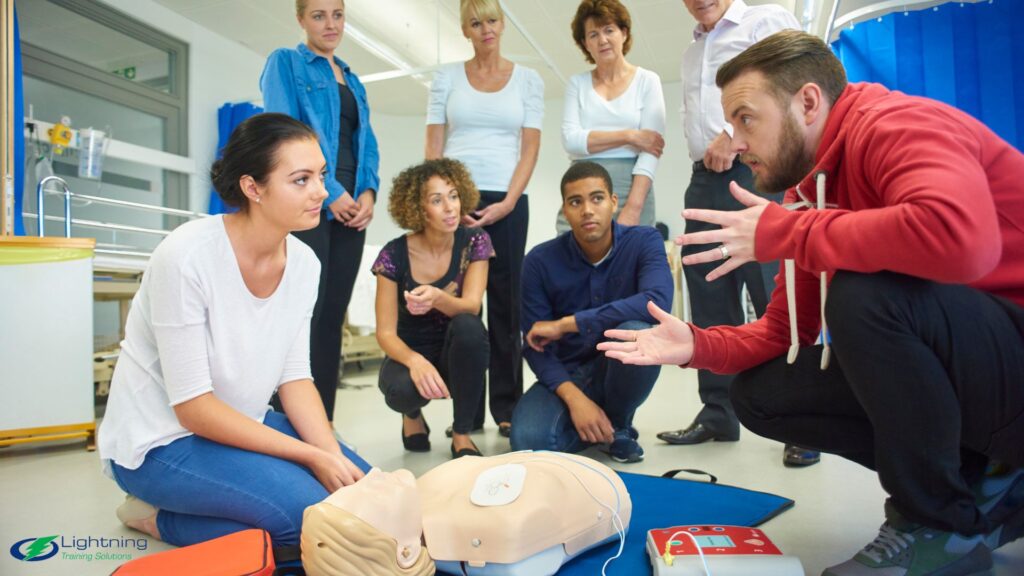
Myth Busting: The 5 Most Common TV CPR Fails
The dramatic flair of television often gets in the way of the facts.
Here are the most common CPR myths that have been ingrained in our minds by years of on-screen resuscitation attempts, and the important reality behind each one.
Myth 1: CPR is a Guaranteed Fix.
On TV, CPR almost always works, with the casualty making a full recovery.
We’ve seen it time and again, from intense action thrillers to beloved soap operas like Coronation Street, where a few pumps to the chest are often portrayed as an instant cure.
Reality
The primary goal of CPR isn’t to magically bring someone back to life; it’s to keep oxygenated blood flowing to the brain and other vital organs, buying precious time until a defibrillator can be used or an ambulance arrives.
The survival rate for an out-of-hospital cardiac arrest is sadly low (Less than 1 in 10), but effective bystander CPR can more than double a person’s chances of survival.
It’s a bridge to definitive care, not a guaranteed revival.
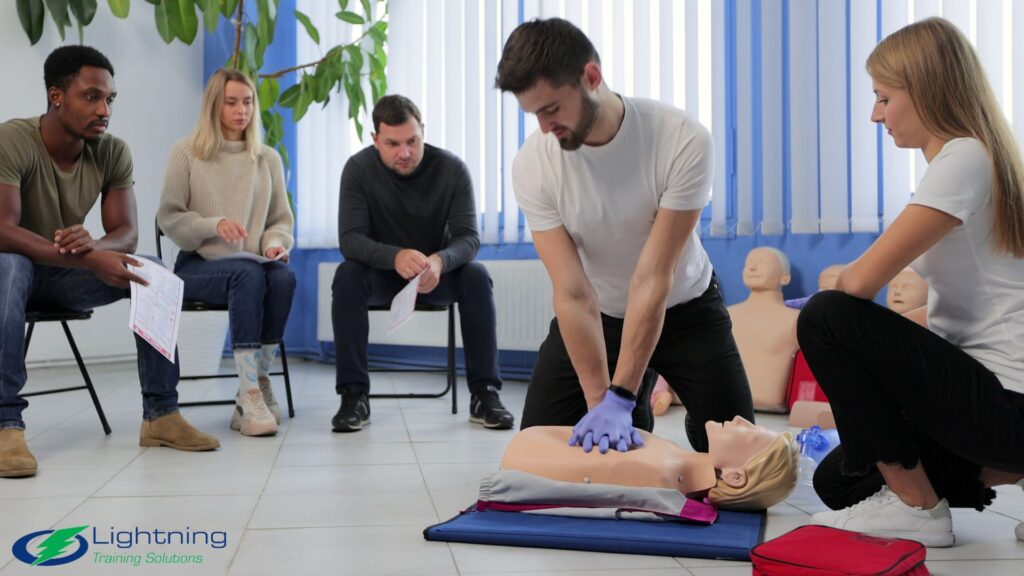
Myth 2: One Push and They’re Awake!
We’ve all seen the dramatic single chest compression that makes a person instantly cough and sit up.
The most famous example might be Jack Bauer from 24, who frequently seems to revive people from cardiac arrest with a single, dramatic shove.
Reality
Real CPR is physically demanding.
Effective chest compressions require pushing down hard and fast—at a rate of 100 to 120 compressions per minute and to a depth of 5-6cm for an adult.
It’s an exhausting, continuous process that will leave you breathless. It’s not a gentle tap; it’s a sustained, vigorous effort to manually pump the heart.
Myth 3: You Can’t Get CPR Wrong.
The heroes on screen just seem to “know” what to do without any training. Even during the Coronation Street CPR scenes, the procedure often appears intuitive and effortless.
Reality
Correct technique is crucial.
Incorrect hand placement can be ineffective or even cause further injury. The key is to place the heel of your hand on the centre of the casualty’s chest.
During CPR, you will almost certainly break the person’s ribs, and this is a sign that you are doing it correctly.
While this sounds frightening, it’s a necessary consequence of performing compressions with the required force. A broken rib will heal; an un-oxygenated brain will not.
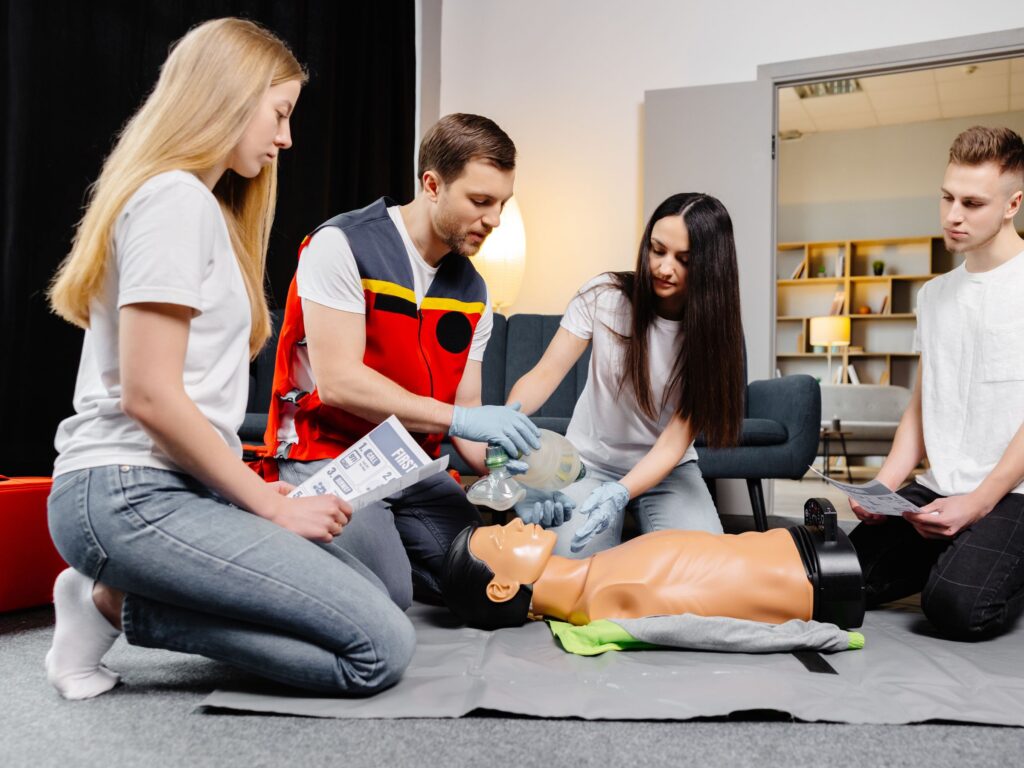
Myth 4: A Defibrillator is Always Used Like in the Movies.
On TV, defibrillator paddles are often used to shock a heart that has stopped completely (a flat line on the monitor), like in countless medical dramas.
Reality
This is a critical misconception.
A defibrillator is designed to correct a specific, abnormal heart rhythm (ventricular fibrillation), not to restart a completely stopped heart.
If a casualty’s heart has stopped, the machine will not deliver a shock. This is why continuous, high-quality chest compressions are always the first and most vital step.
Myth 5: CPR is Just a Few Minutes Long.
TV scenes typically last a minute or two before the character is revived or pronounced dead.
Reality
In real life, CPR continues without interruption until a few key things happen: the person shows signs of life, a medical professional takes over, or the rescuer is physically unable to continue.
This could be for a significant amount of time, not the 30-second scene we see on screen!

The Role of Defibrillators: Demystifying the “Clear!” Command
How many times have you seen a defibrillator used on someone who still has a pulse? Or heard the dramatic line, “Clear!” before shocking a flatline?
In real life, defibrillators just don’t work like that.
They’re designed to treat specific, dangerous heart rhythms, not a flatline, and they won’t deliver a shock unless the heart is in a “shockable” rhythm.
What’s more, defibrillators aren’t just for healthcare professionals.
Public access defibrillators are designed for anyone to use. They’re simple, automated, and give clear spoken instructions to guide you through every step so you can help save a life, no medical training needed.
Spotting a Cardiac Arrest: What TV Often Misses
On screen, cardiac arrest is usually shown as someone clutching their chest and dramatically collapsing, which are usually the signs of a heart attack.
A cardiac arrest is when the heart suddenly stops pumping blood around the body, and the signs are very different, which is why it’s so important to know what to look for.
When someone is in cardiac arrest, they will:
- Be unconscious and unresponsive – they won’t wake up when you shake them or call their name.
- Not be breathing normally – they may not be breathing at all, or they may make occasional, irregular gasps (agonal breathing), which can easily be mistaken for normal, effective breathing.
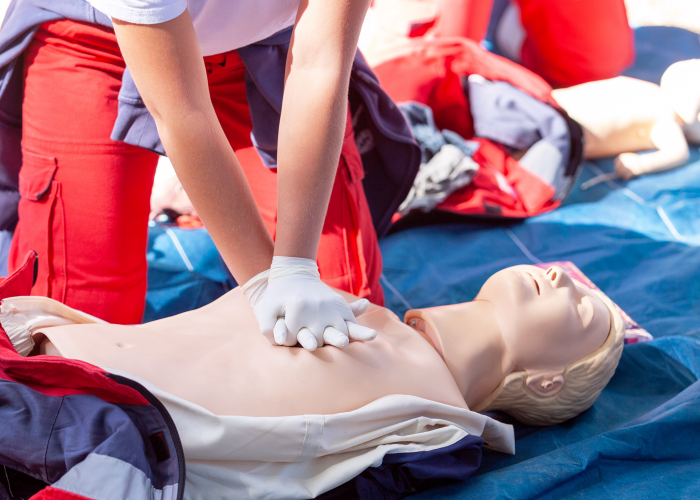
Your Chance to Make a Real Difference: Our First Aid Courses
Understanding the myths is a great first step, but learning the correct, life-saving procedures is what truly matters.
At Lightning Training Solutions, we bridge the gap between fiction and fact, providing professional, certified First Aid training that empowers you with the skills and confidence to act effectively in a real emergency.
We ensure that every person we train understands the physical and mental realities of CPR, giving them the competence to make a genuine difference.
Our courses include:
- Emergency First Aid at Work (EFAW): This one-day course gives you a solid foundation in CPR and other essential life-saving skills.
- First Aid at Work (FAW): Our comprehensive three-day course offers in-depth CPR training and a wider range of First Aid skills for more complex emergencies.
- Outdoor First Aid: This course is tailored for those in remote environments where professional help may be delayed, focusing on extended casualty care and improvised techniques, including CPR.
Each course provides hands-on practice under the guidance of experienced instructors, so you’ll be prepared for the realities of CPR, not just the fantasy.
We also hold regular Open First Aid Courses in Yeovil, Somerset.
Be a Hero in Real Life!
While we love the entertainment value of TV’s CPR scenes, we must never mistake them for accurate instruction. In a real-life emergency, there is no retake, no script, and no dramatic swelling music.
There is only you and the skills you possess.
Don’t be a passive observer; be an active life-saver. Take the crucial step from TV viewer to trained hero!
Book a course with Lightning Training Solutions today and learn the proper, evidence-based techniques that can truly make a difference!
